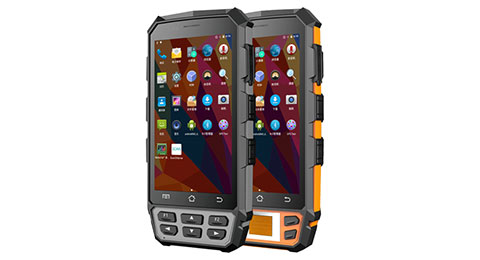400-9920-618
Mobile data handheld terminal refers to a data processing terminal that has an operating system, memory, CPU, graphics card, screen, keyboard, and has the ability to transmit data,mobile and protable for using.
Handheld computer terminals have a wide range of applications in the rapidly developing modern society, and they also have very common applications in the manufacturing industry. However, how to better choose smart handheld terminals and how to compare the pros and cons of different handheld terminal products has always been a lingering problem for industry users. So today we will analyze and explain from 10 aspects such as industry application, operating system, memory capacity, CPU performance, screen resolution, encoding range, protection level, interface requirements, first reading rate, and communication capabilities.

1. Application field
The application fields of handheld terminals are very wide, and users can choose different handheld terminals according to their different usage conditions. Take the warehouse as an example. If a user uses a PDA in a large three-dimensional warehouse, where the items are stored at a higher location and far from the operator, they should choose a handheld terminal with a large scanning depth, a long reading distance. For users in small and medium-sized warehouses, PDAs with complete functions and easy operation can be selected.
2. Operating system
Operating systems include Android, Windows Mobile, Windows CE and handheld terminals without operating systems. The handheld terminal without an operating system is an embedded system based on C language and Linux that requires secondary development. It has a graphical interface and communication interface for human-computer interaction. This type of embedded system has low resource consumption, and is more professional and stable. sex. The choice of different operating systems will have different operating experience. But at present, the Android system is commonly used in China
3. Memory capacity
The memory capacity of the handheld terminal determines the data capacity, and its memory capacity corresponds to the processing speed of the CPU. If a PDA with a low-performance CPU will increase the processing and waiting time for users if blindly increasing its memory capacity.
4. CPU performance
At present, indicators such as CPU digits and main frequency of handheld terminals have improved. Some high-end PDA products have adopted 32bit CPU with RISC, which improves the user's on-site processing speed.
5. Screen resolution
The higher resolution can better support the software, display the operation interface, and improve the user experience. Appropriate brightness and contrast also protect the eyesight of the operator.
6. Coding range
Hand held terminals can recognize more than a dozen different code systems such as EAN codes and UPC codes, but there are big differences. In the application of logistics enterprises, EAN128 code, 39 code, Coudba code should also be considered. The user should fully consider the coding range in his actual application when choosing.
7. Protection level
The higher protection level can ensure the stable operation of the PDA in the harsh industrial environment and ensure the work efficiency.
8. Interface requirements
The user should understand clearly the operating environment, interface mode, etc. when choosing, and choose the appropriate PDA to adapt to different operating environments and interfaces.
9. Communication ability
As an extension of the computer network system, the data collected by the handheld terminal and the processing result must be exchanged with the computer system. At present, the handheld terminal uses infrared communication to transmit data without any plug-in components, which reduces the possibility of failure and increases the service life of the product.